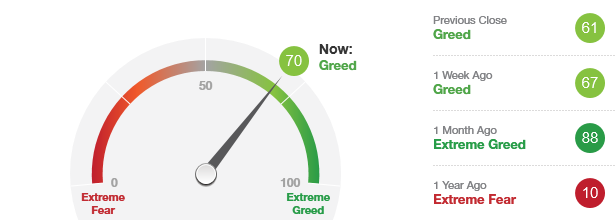Market Overview
This month's models have been posted. There are CHANGES in ALL MODELS (highlighted in yellow).
Bear hunting
As we established a few months ago, it’s hard to gauge the point at which you’ve entered a recession – two consecutive quarters of negative economic growth. It’s much easier, though, to figure out when you’ve hit a bear market because a bear market occurs when the stock market, usually defined as the S&P 500 index, falls 20% from its peak.
It’s a fixed point, immediately identifiable by independent observers. We experienced a brief bear market when on December 24, 2018 the market broke through the 20% loss threshold, but investors who didn’t panic made every penny back by mid-April 2019. More dramatically, the S&P fell through the 20% threshold on June 27, 2008 as an effect of the Great Recession. While the market plunge witnessed last year barely even qualifies as a bear market, the decade-ago event was devastating, with the S&P 500 losing 57% of its value over the course of the carnage.
As with a recession, it’s possible to be starting a bear market and not know it. Since the starting point is dated back to the peak, the market may be trending downward and could take quite a while to be down to the 20% loss threshold. The bear market coinciding with the recession technically started on October 9, 2007, with the market up 10.5% year-to-date. The S&P lost less than three points the following day, and less than 7.5% through the end of the year. It took more than eight months to cross the threshold into bear territory, and 17 months to hit rock bottom. Recessions happen more quickly – after six months you know if you’ve had two consecutive quarters of negative growth.
So more helpful information would these questions: What are the signs that we might already be in a bear market? How low and how long can it go? And what can we do to protect our assets in such inauspicious times?

Bears aren’t always this cute and friendly. Credit: AlaskaFreezeFrame on Flickr
Early warning
For there to be a retreat from a peak, there must first be a peak. Share prices have a tendency to regress to a mean over time, so a quick sprint to the top can ricochet into a race to the bottom. All three major U.S. indices have repeatedly hit records in recent days. Still, that possible market top doesn’t necessarily foretell a bear market or even a correction, which is defined as a 10% drop from the peak.
The fact that stock indices are at historical highs, though, sets the stage for a possible retrenchment. One key factor to look at now is consumer sentiment. The University of Michigan’s monthly survey of consumers is the most frequently cited benchmark. For the past three years, it’s been right around where it was during the peak of the dotcom boom, mid-1998 to mid-2000. That is to say, consumer optimism is as high now as it has ever been. Consumer spending accounts for two-thirds of the U.S. economy, so end-user households are in a better position than anyone on Wall Street or at the Commerce Department to know when the party’s over. A downward tack on the Michigan survey has proven to be a solid prognosticator of near-term share prices. For now, there doesn’t seem to be a lot of movement and the survey score could hold for some time longer but, if history is instructive, the indicator has only one direction to go from here.
Our September article noted the manufacturing sector might already be in recession, as indicated by the Federal Reserve’s factory output reading. While this doesn’t mean that other sectors will necessarily follow suit, it’s certainly not good news. (Even so, as we note below in our discussion of the U.S. economy, the outlook for factory orders might not be as bleak as forecasted.)
Just as it’s advisable to diversify your investments, it’s advisable to have a basket of different indicators to judge which direction the economy is likely to go – and possibly take the stock market with it. The Conference Board, a non-profit business research firm, curates the Leading Economic Index, an amalgam of ten separate metrics related to employment, factory output, construction, interest rates and money supply. As of this writing, the LEI has been declining mildly for three consecutive months.
While these indicators can tell you a lot about the economy and while the economy has a lot to say about share prices, there’s no direct link. For that, traders often pay special attention to another metric - the advance/decline line. It shows the number of stocks that are participating in a rally and the number of stocks that aren’t. If the A/D line rises along with the market indices, that means everything is great. If, however, the market keeps rallying but fewer stocks are participating, that suggests the good times are probably coming to an end. It might not mean a recession is coming, or even a correction, but a falling A/D line suggests that investors are reaching the point where they want to take their profits and get out.
What’s to be done
Everybody has a theory about the best way to weather a bear market. Some of them are mutually exclusive, so they can’t all be right, although they’ve all worked for somebody at some point. Here’s a list of tactics for your consideration, but it’s always best to talk to a trusted financial professional before settling on any of these:
Dollar-cost averaging. If you spend $500 a month buying stocks, don’t stop just because the market is going down. If the market goes down 50%, that means your dollar buys twice the quantity of shares it did before the sell-off. This tactic pays big dividends once the next bull market commences and all those cheap shares appreciate quickly.
Move to value. Growth stocks are for growth times, some might tell you. When the sledding gets rough, it could be a smart move to rebalance your portfolio to favor big, longstanding companies with clean balance sheets and dependable dividends.
Inverse funds. Some exchange-traded funds are designed to move in the opposite direction of the market as a whole. These ETFs then act as a hedge against a bear market. We’ve established, though, that retrenchments can occur incrementally over the course of many months. That being the case, it might make more sense for you to have them in your portfolio throughout the cycle, then rebalance as the downward trend becomes clearer.
Stop trading on margin. Borrowing from your broker to buy more stock might sound like a good idea during frothy times but, as asset prices decline, your exposure to the downside increases. At the very least, if margin trading isn’t part of your investment strategy today, a bear market isn’t the time to start.
Short-sell. As long as the price of the stock you’re shorting keeps going down, this high-risk tactic works fine. But once the market for it bottoms and it starts appreciating again, you could be left in a vulnerable position.
Net-net
Historically speaking, bear markets are 50% more frequent than recessions. While there have been 22 recessions since 1900, there have been 33 bear markets. They occur, on average, every 3.5 years, but that doesn’t help predict when the next one is coming. You’ve no doubt heard the old saw about the man who drowned in a river with an average depth of six inches.
You cannot know when the next bear market will start, how far the market could drop, or how long it will take the stock market to recover. We sure don’t. Your professional financial advisor, though, will likely have the data, models, and most importantly strategies and a plan to help guide you through the next rough patch.




 Steve Anglin, CPA is a Managing Partner at Smith Anglin Financial, and the Head of the Tax Preparation Services. He is also responsible for Smith Anglin’s compliance supervision. He holds a BBA in Accounting and a BBA in Real Estate, and numerous securities licenses and designations.
Steve Anglin, CPA is a Managing Partner at Smith Anglin Financial, and the Head of the Tax Preparation Services. He is also responsible for Smith Anglin’s compliance supervision. He holds a BBA in Accounting and a BBA in Real Estate, and numerous securities licenses and designations.

